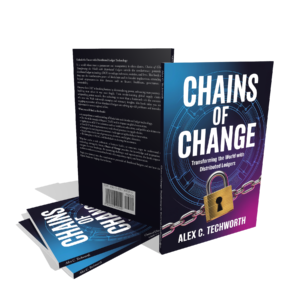Chains of Change Distributed Ledger Technology Review – Complete Guide to Blockchain Transformation

Distributed ledger technology is revolutionizing how we think about trust, transparency, and financial systems in the digital age. If you’re struggling to understand how blockchain applications extend beyond cryptocurrency or wondering how decentralized finance could impact your future, “Chains of Change: Transforming the World With Distributed Ledgers” provides the comprehensive roadmap you need. This groundbreaking ebook cuts through the technical jargon to reveal practical applications of DLT across industries from healthcare to supply chain management.
Unlike other blockchain books that focus solely on cryptocurrency trading, this guide explores the transformative potential of distributed ledger technology in creating transparent governance systems, ethical supply chains, and sustainable environmental solutions. Written for both newcomers and experienced professionals, it bridges the gap between complex technological concepts and real-world implementation strategies.
What You’ll Discover
- Master Blockchain Fundamentals: Learn distributed ledger technology basics and understand how decentralized systems create trust without intermediaries
- Explore Decentralized Finance Revolution: Discover how DeFi is reshaping traditional banking and providing universal access to financial services
- Unlock Supply Chain Transparency: Transform your understanding of how blockchain applications enhance ethical sourcing and reduce fraud in global supply networks
- Navigate Digital Identity Solutions: Master the creation of secure online environments that protect privacy while empowering individual control
- Drive Environmental Sustainability: Learn how distributed ledger technology tackles ecological challenges through carbon credit tracking and renewable energy trading
- Implement Governance Innovation: Understand how blockchain technology can revolutionize elections, land registries, and transparent government systems
Why This Book Matters
The digital transformation happening today requires more than surface-level understanding of blockchain technology. This comprehensive guide addresses the critical knowledge gap between cryptocurrency hype and practical distributed ledger applications. You’ll gain expertise in how DLT enhances transparency benefits across sectors while learning the ethical considerations necessary for responsible implementation.
Whether you’re a business leader exploring blockchain applications for your organization, a developer seeking to understand decentralized systems, or simply curious about how distributed ledger technology will shape our future, this book provides actionable insights you can apply immediately. The practical case studies and real-world examples ensure you understand not just the theory, but the transformative power of DLT in action.
Key Features
This comprehensive ebook spans multiple detailed chapters covering distributed ledger technology fundamentals, decentralized finance strategies, and blockchain applications across industries. Available as an instant digital download, you’ll receive immediate access to practical implementation guides, real-world case studies, and actionable frameworks for understanding DLT. The format allows for easy reading on any device, with printable reference materials for hands-on learning. Also available as audiobook on Google Play Books and Spotify for convenient listening during commutes or workouts.
Frequently Asked Questions
Is this blockchain book suitable for beginners to distributed ledger technology?
Absolutely! The author breaks down complex distributed ledger technology concepts into accessible language. You don’t need prior blockchain experience to understand how DLT applications work across different industries. The book starts with fundamentals before advancing to practical implementation strategies.
How does this differ from other cryptocurrency and blockchain technology books?
While many books focus solely on cryptocurrency trading, this guide explores the broader applications of distributed ledger technology in healthcare, supply chains, governance, and environmental sustainability. You’ll learn practical blockchain applications beyond financial speculation, making it valuable for business and personal understanding.
What makes the decentralized finance section particularly valuable for readers?
The DeFi chapters provide real-world examples of how decentralized finance is removing traditional banking intermediaries and creating accessible financial services. You’ll understand both opportunities and risks, with ethical considerations for responsible blockchain technology adoption.
Get Your Copy Today
Transform your understanding of distributed ledger technology with this comprehensive guide to blockchain applications and decentralized systems. Available for instant download at just $6.99, this ebook provides exceptional value compared to expensive cryptocurrency courses or blockchain workshops. Also available as audiobook on Google Play Books and Spotify. Purchase your copy through all major ebook retailers including Apple Books, Barnes & Noble, and Kobo to begin mastering the future of digital transformation today.
Watch the Video Review

